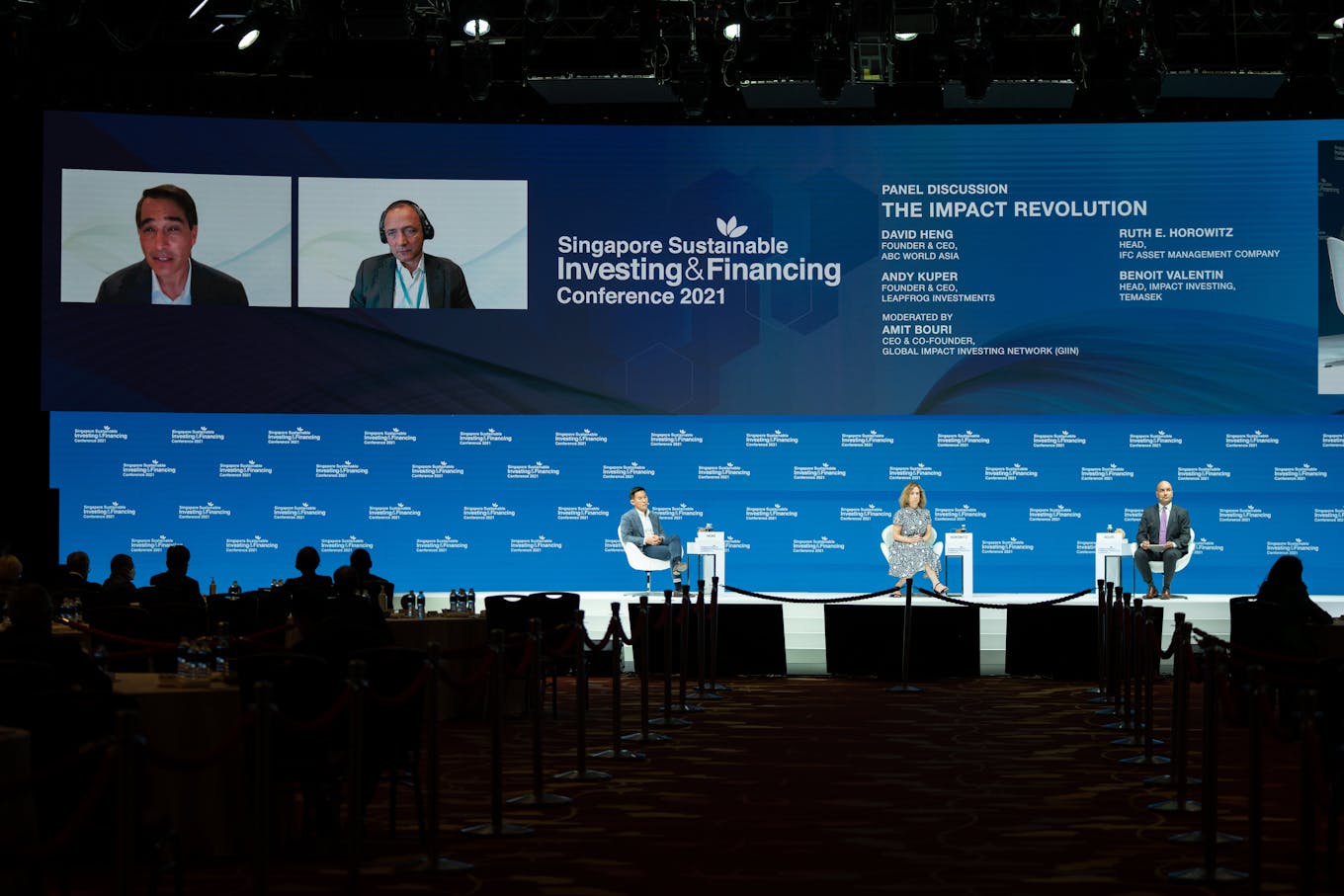Millennial wealth, technology and big data are major drivers propelling the growth of impact investment and will cause seismic changes in where people allocate their money.
“The impact revolution will build on the tech revolution as entrepreneurs begin to develop impact business models that combine a value creation model with the delivery of impact,” said Sir Ronald Cohen, chairman of the Global Steering Group for Impact Investment, a non-profit. “The more impact a company delivers, the greater the profit it generates.”
Impact investing is an emerging field of asset management where investments are made with the intention of generating positive, measurable social and environmental impact alongside a financial return. Unlike philanthropy or other forms of sustainable investment, such as green bonds, investors in impact funds expect the financial returns to match other outcomes.
The current market size of impact investing is estimated to be US$715 billion, and managed by over 1,720 organisations, based on a 2020 investor survey by non-profit Global Impact Investing Network (GIIN). It continues to attract a steady stream of new entrants and this figure is likely to be closer to one trillion now, said Andy Kuper, founder and chief executive of LeapFrog Investments. The growth reflects investor demand that their savings do more than just make money.

Panellists discuss impact investing at Singapore Sustainable Investing & Financing Conference (SSIFC), an event co-organised by investment manager Blackrock, International Finance Corporation and state investment firm Temasek as part of Ecosperity Week, 2021. L-R: Andy Kuper, LeapFrog Investment, Benoit Valentin, Temasek, David Heng, ABC World Asia, Ruth E. Horowitz, IFC and Amit Bouri, GIIN.
“There is no doubt … mega private equity groups and other groups entering the space, they’re coming because they believe they can fulfil their fiduciary obligations to get outsized returns along with outsized impact,” said Kuper at the inaugural Singapore Sustainable Investing & Financing Conference (SSIFC), an event co-organised by investment manager BlackRock, the International Finance Corporation and state investment firm Temasek as part of Ecosperity Week 2021.
Aligning making money with making impact
A hallmark of impact investing is the commitment of the investor to measure and report the social and environmental performance and progress of underlying investments, ensuring transparency and accountability while informing the practice of impact investing and building the field, according to GIIN.
A growing number of consumers, and so retail investors, want their money aligned with their values. “They want it in terms of the products they buy, where they work, but also how they invest,” Amit Bouri, GIIN’s CEO and co-founder explained during the panel discussion.
This is particularly the case for millennials who are poised to receive more than US$30 trillion of inheritable wealth. As a result, fund managers are increasingly allocating resources to develop products and capture this emerging client segment.
“The younger generation… keen to put more into impact have sometimes struggled to find the right investment vehicles, but there is huge pent-up demand for that,” said Benoit Valentin, impact investing head at Temasek. “There is a lot of awareness, a lot of intention from millennial investors to invest in alignment with their values.”
Millennial investors are nearly twice as likely to invest in companies or funds that target specific social or environmental outcomes, according to a report by EY, a professional services firm.
Despite a growing demand by investors for funds that meet their ethical demands, Asia remains largely underserved by impact investment even though the region represents 60 per cent of the world’s population.
Overcoming barriers to making impact
Overcoming the digital divide in Asia will help to drive other forms of inclusion, according to David Heng, founder and CEO of private equity firm ABC World Asia. “Tech is a very powerful enabler and business owners using tech [help] provide solutions to the underserved and tackle some of the environmental issues,” Heng said.
Low-tech players in the remittance space for example provide a service for people with low-incomes but have been “serving them fairly badly” said Kuper, with the cost of sending money overseas attracting a 10 to 15 per cent fee. Digital disruptors, such as Zepz (formerly WorldRemit) which sits on LeapFrog’s portfolio, have dramatically reduced the cost of remittance for foreign workers sending their earnings home.
“You can see that serving millions of people with a far better service due to digital, can be not only highly impactful but value accretive,” Kuper said. Tech is also driving fundamental shifts in healthcare and education that has the potential to ensure more equitable access to basic services in developing nations.
Another area where impact investment could wield positive influence is in the region’s infrastructure plans. Southeast Asia needs US$2 trillion worth of investments over the next decade to build sustainable infrastructure that can help cut down the region’s greenhouse gas emissions, according to a report from Bain & Company, Microsoft and Temasek, published in September.
Investments are needed in renewable energy, electric vehicles and waste management projects.
“The question is, how do you get that capital to those projects?” asked Ruth E. Horowitz, head of the IFC’s Asset Management Company. A regulatory structure that enables public-private partnerships is a key enabler. Second, she added, is third-party capital.
“You need to be able to work across the entire ecosystem, with companies, investors, and governments so you can structure the economy in a way that can work … a really important part of this is thinking about not just the pipeline of businesses, but a pipeline of regulation.”
Risks remain
With rapid growth, comes risk, warned Temasek’s Valentin. Greenwashing of investments — making unsubstantiated or misleading claims about the sustainability characteristics and benefits of a financial product — is an obvious risk.
“The big risk is that impact gets defined by those who are effective at asset gathering, but are offering impact light,” agreed Kuper.
“Mission creep”, where there is an incremental broadening of an organisation’s objectives beyond its original scope, is another risk financial institutions and asset managers are facing. Firms that are increasingly focussing on measures to recognise the impact of climate change, could result in a distraction from their core objectives.
“We have seen that in our traditional private funds, when you outgrow your skill-sets, that is when there is a risk,” Valentin said.
The third risk, said Valentin, is asset inflation. “Sometimes you have an ESG [environmental, social and governance] premium, which is hard to justify in terms of fundamental valuation, and there is a risk in impact investing that you build an impact premium artificially.”
Despite the roadblocks and risks, the outlook for impact investment is positive with a massive change in values a key driver in triggering an impact revolution, said Cohen. “Young people who refuse to purchase the products of companies that are doing harm, either climatically or socially … the same young people who refuse to work for these companies …has serious implications for the profitability of investment portfolios.”












